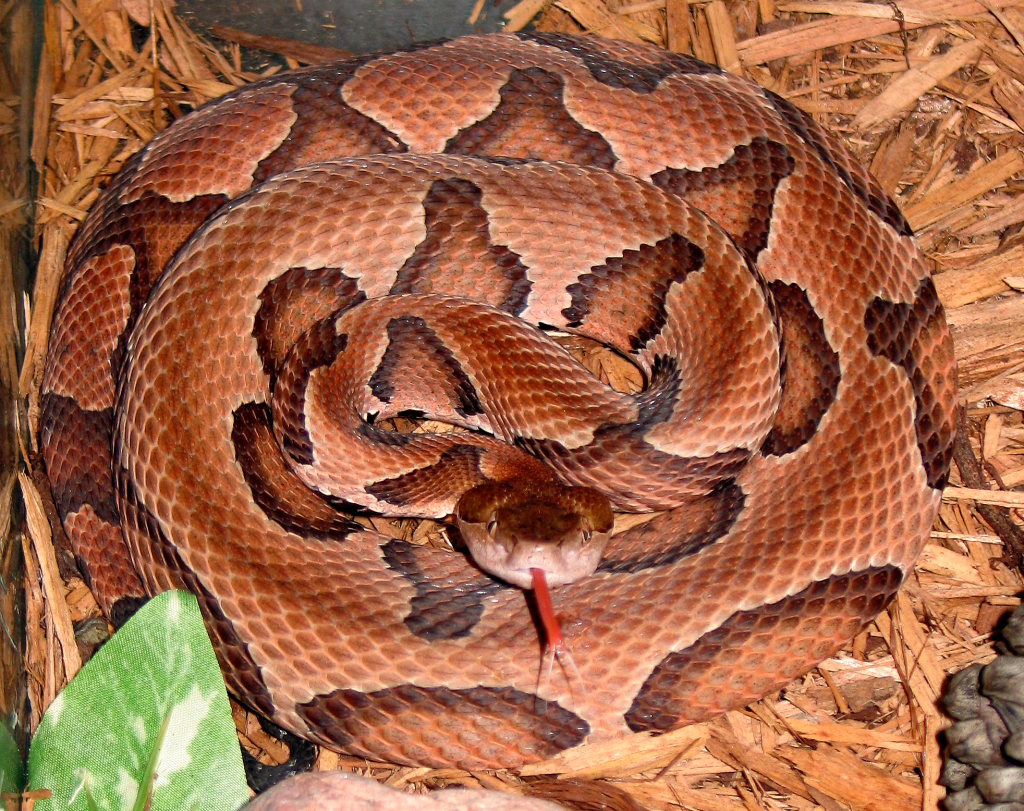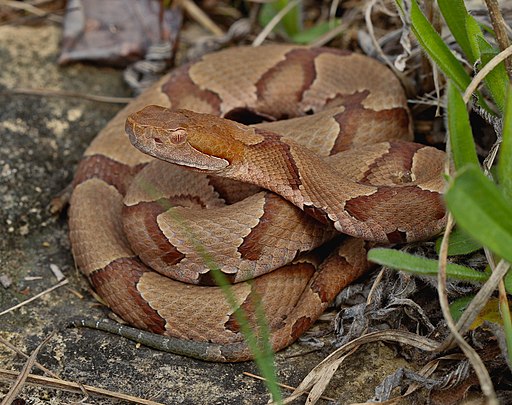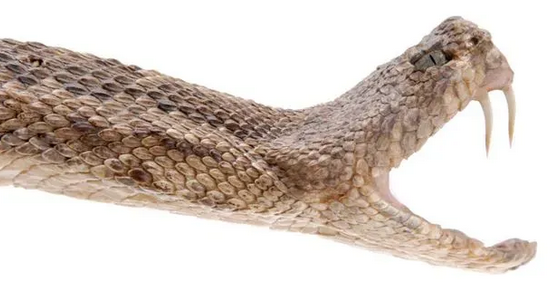
When you think of the 4th of July, what comes to mind? The Stars and Strips? Fireworks? The national anthem? How about snakes? Though we might not readily think of these slithery creatures as associated with the American Revolution and Independence Day, they have a long history of showing up in distinctly American ways. Starting in 1754, snake imagery was used in the first political cartoon published in an American newspaper: this is the famous “Join or Die” cartoon by Benjamin Franklin depicting the American colonies as sections of a snake. Not long after, in 1775, the Gadsden flag was adopted by the flagship of the Continental Navy: this flag features a rattlesnake with 13 rattles to represent the 13 colonies. Even in modern pop culture, snakes can play a role in establishing a character as uniquely American: think of the cowboy, Sheriff Woody, saying, “there’s a snake in my boot” in Toy Story. But even being associated with early American symbolism or a beloved animated movie hasn’t stopped the fear of snakes (ophidiophobia) from being one of the most common phobias afflicting Americans.
So what’s so scary about snakes? To start with, the United States has around 30 species of venomous snakes, with all but 4 states (Alaska, Hawaii, Maine, and Rhode Island) being home to at least 1 species; this means that the majority of Americans at least have a chance of encountering a venomous snake. Of those potential encounters, around 8,000 people will be bitten by a venomous snake in the United Stated annually and roughly 5 of them will die (this statistic would be much higher if emergency medical care wasn’t quickly sought). The most common venomous snakebites come from the pit viper family, which includes rattlesnakes, cottonmouths (water moccasins), and copperheads. Though they aren’t the mostlethal snake on the list, copperheads are one of the most common venomous snakes you will encounter in the DFW area, and as such, one of the greater dangers you and your family (including your fur babies) could face this summer.

What do Copperheads Look Like?
There are three types of copperheads found in Texas: the Eastern copperhead (in eastern Texas), the Broadbanded copperhead (in central and western Texas), and the Trans-Pecos copperhead (in the southern part of the Trans-Pecos). Though there are subtle differences between the three subspecies, ultimately they share the same basic characteristics to help you identify them. They are between 20 and 30 inches in length, with a light tan body covered in rough scales and crossbands of a chestnut or reddish-brown color. The dark crossbands of the Southern copperhead are notable as they are distinct hourglass shapes, with the middle part of the hourglass resting along the spine of the snake. Broadbanded copperheads, as their name implies, have a thick, dark band that does not narrow into an hourglass shape. All 3 subspecies have yellow eyes and share the characteristic pit viper trait of a heat-sensing opening (“pit”) on each side of their head between their eye and nostril.

Where do Copperheads Live?
Generally speaking, copperheads live in areas where they can find three things: a protected hiding place, water, and food. In the wild this will most often mean pastures or woodlands, but they can be just as happy with a secluded space in your yard, shed, or even your house. Since they are cold-blooded, you can expect to find them in different locations throughout the seasons and even throughout the day. In cooler temperatures, they can be found sunning on warm surfaces like rocks and pavement. However, during the heat of summer they prefer shade and will be well hidden under bushes, brush piles, sheets of plywood, or any number of items you could have around your home that creates a secluded, shady place. As Mitchell Willetts with the Fort Worth Star-Telegram reported recently here, they can even be found lurking in a toolbox in your garage! During winter, they will hibernate in dens that are generally in rock piles or caves, inside logs or stumps, in stone walls, or even in brush or leaf piles. If you happen to find a snake den and see snake eggs in it, you can rest assured it’s not a copperhead den, since copperheads birth their young encased in an amniotic sac, and do not lay eggs.

What do Copperheads Eat?
All snakes are carnivores, and copperheads are no exception. Adults of this species prefer vertebrate animals, such as rats, mice, frogs, birds, and even squirrels. However, when they are younger and smaller, they generally feast on invertebrates such as grasshoppers, beetles, millipedes, cicadas, and spiders. And yes, they do swallow their food whole.

Are Copperheads Dangerous?
The short answer is, “yes”. Texas has over 105 different species and subspecies of snake and of that number, only 15 are potentially dangerous to humans; and copperheads are definitely part of that 15. Not only do these snakes have sharp fangs capable of causing significant puncture wounds (and the risk of infection, including tetanus), they are venomous, delivering hemolytic venom to its victim, which will break down red blood cells in the body; when this hemolysis is severe it can result in shock, arrhythmias, and even heart failure, with additional potential complications of kidney or liver disease. Though they are not known to be aggressive, they will bite when provoked or threatened, leading them to be responsible for the most bites from a venomous snake in the U.S. If quickly and properly treated at a hospital, the victim of a copperhead bite is unlikely to develop severe symptoms or die; however, those at high risk, like children, immunocompromised individuals, and the elderly, are much more likely to face a difficult and costly recovery or potentially not recover at all. If you or a loved one receive a venomous snakebite, refer to the CDC guidelines for snake bites and seek emergency medical care as soon as possible.
And while a copperhead bite for a human is a scary thing, even more dangerous is when the bite is inflicted upon one of your pets. These bites can cause paralysis, tissue damage, and even death; if you suspect your pet may have been bitten by a snake, getting them to an emergency vet ASAP is their best chance at survival. Symptoms of a snake bite include: localized pain, bruising, swelling, and 1 or 2 small wounds that are trickling blood. Be especially mindful of these symptoms around dogs’ heads and cats’ front paws, as these are the areas most commonly bitten.
What do you do if you Encounter a Copperhead?
The most important thing to do if you cross paths with a copperhead is to leave it alone. Do not attempt to capture or kill it as that drastically increases your likelihood of being bitten. If you have noticed it near or around your home, call The Bug Dude at 800-310-BUGS (2847) to get the help of an expert technician in eliminating your snake problem.

How do you Prevent Copperheads?
Ultimately, preventing copperheads from taking up residence in your home and yard comes down to eliminating sources of shelter and food. Fortunately, eliminating areas where snakes are likely to shelter also reduces areas where they are likely to find food. Here are some top tips on preventing these venomous snakes from calling your house their home:
- Maintain a regular pest control service plan with Mid-Cities Pest Control to keep insects and rodents (preferred meals for copperheads) away from your home.
- Keep your yard free of brush piles, leaf litter, and clutter.
- Keep your grass nicely trimmed; long grass makes nice hunting grounds for snakes.
- Trim away low branches on bushes and shrubs.
- Keep wood piles away from your home.
- Keep your shed and garage tidy and be cautious before reaching into or under any items that could create shelter for a snake.
- Seal any holes or cracks on the exterior perimeter of your home, garage, and shed.
- Make sure that doors and low windows close fully and are properly sealed.
- Check out our blog for monthly tips on preventing insects and wildlife from infesting your home and yard to help reduce a copperhead’s food source.
Additionally, take these steps to prevent contact with copperheads, whether at home or out and about:
- Keep an eye on where you’re walking or reaching.
- Use a stick or something with a long handle to move boards or logs before reaching under them.
- Wear tall, thick boots and leather garden gloves if doing yard work in areas likely to harbor snakes (such as bushes or leaf piles).
- Don’t reach into an area if you can’t see what might be in there.
How do you Eliminate Copperheads?
If you see a snake in or around your home that you’re concerned could be dangerous, immediately call The Bug Dude at 800-310-BUGS (2847) and enlist the help of our expert technicians. When possible, take a picture of the snake you saw to help the technician identify the snake, but do so only from a safe distance. Do not interact with the snake yourself! Not only is your risk of being bitten drastically increased if you attempt to capture or kill it, but Texas has specific regulations regarding the treatment of different snake species (with many being protected by state law) and unless you know those regulations, and which snake species you are encountering, you could find yourself on the wrong side of the law.
So while you’re outside celebrating the 4th of July this summer, if you happen across a snake in your yard, take a moment (while you slowly get out of its way) to think on the many roles it has played in American lore, and then call The Bug Dude.
Further Reading:
“Watch Your Step! Snake Season in Full Swing” – NBC DFW
“Sneaky serpents: Texas Department of Agriculture reminds Texans to keep sharp eye out for snakes” – Paul Livengood – KVUE ABC
“‘Never been so scared’: Venomous copperhead snake bites 5-year-old boy at Texas home” – Priscilla Aguirre – MySA.com
“Snakes and Their Control” – Texas A&M AgriLife Extension
“Identifying Venomous and Nonvenomous Snakes in Texas” – Dr. Maureen Frank, Assistant Professor and Extension Wildlife Specialist – Texas A&M AgriLife Extension
“Venomous Snake Safety” – Texas Parks and Wildlife Department
Author Bio: Alissa Breach has been gaining knowledge and experience around pest control concerns over the last 12 years while working for Mid-Cities Pest Control. She has a creative writing BA from UW-Madison and is always pursuing new and interesting writing projects.




